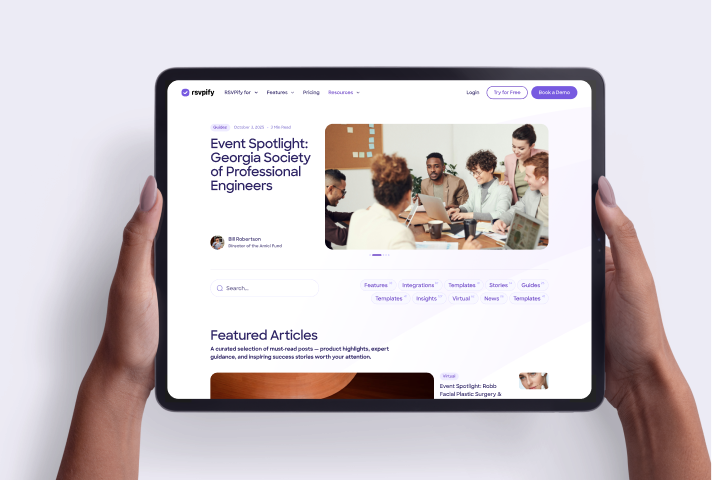In the fast-paced world of event planning, efficiency and seamless execution are essential. The days of traditional registration desks and long lines that give a bad impression to event attendees as they enter are rapidly becoming a thing of the past. Instead, more and more event planners are turning to self check-in kiosks, which offer a variety of benefits for both event hosts and attendees alike. These interactive stations can take the place of paid staff, and can be dispersed throughout an event to remove the need for single points of entry, lines, and much more.
What is a self check-in kiosk?
A self check-in kiosk is a touch-screen, automated registration station that allows event attendees to check themselves in without the need for manual assistance from event staff. The kiosk operates with intuitive user interfaces, guiding attendees through the registration process step-by-step. Users can enter their details, confirm their registration, print badges, and retrieve event materials all on their own. These kiosks are adaptable to various events, such as conferences, trade shows, seminars, and more.
While kiosks are often centered on tablet devices, many different types of hardware from laptops to smartphones can serve as kiosks. This makes it easy and cost efficient for event planners, who don't need to necessarily invest heavily in new hardware to create a variety of self check-in kiosk stations throughout an individual event. Instead, staff can be designated to keep tabs on a number of kiosks in a given area, and registration data can be collected and monitored in real-time and remotely by event planners to better incorporate event data and make adjustments or contact registrants who haven't arrived more quickly.
What are the main benefits of using self check-in software at an event?
- Speed and Efficiency - One of the primary reasons to use self check-in kiosks for event planning is the considerable boost in speed and efficiency. Attendees can breeze through the check-in process in a matter of seconds with only their smartphones or pre-printed QR codes needed, reducing waiting times and congestion. This rapid processing allows event organizers to accommodate more participants without compromising on service quality.
- Streamlined Event Management - Event organizers often face logistical challenges on the day of the event. With self check-in kiosks, attendees can handle their registration independently, freeing up staff to focus on resolving other issues and ensuring a smooth event experience. For event planners or organizations operating with a limited budget, automating event registration can allow you to better allocate your funds to other essential components of the event experience.
- Enhanced Attendee Experience - Self check-in kiosks empower attendees to have control over their event registration process. The interactive and user-friendly interfaces contribute to a positive attendee experience, leaving a lasting impression of efficiency and modernity. Often, event management software can also be leveraged to allow attendees to leave notes, questions, or requests during the self check-in process, meaning event hosts can personalize experiences for attendees more efficiently than ever before.
- Real-Time Data and Analytics - Self check-in kiosks capture attendee data in real-time, providing valuable insights into attendance numbers, demographics, and registration trends. Event planners can use this data to make data-driven decisions, tailor marketing strategies, and enhance future event planning. Such analytics enable organizers to adapt their events to meet attendees' preferences and needs.
- Customization and Branding Opportunities -Self check-in kiosks can be customized to reflect the event's branding and theme. This personalization creates a cohesive and immersive experience for attendees, strengthening brand recall. Customized kiosks can also display event-specific information, schedules, and sponsor advertisements, increasing visibility and engagement.
- Sustainability and Cost-Effectiveness - Replacing traditional paper-based registration systems with self check-in kiosks contributes to a more eco-friendly approach to event planning. The reduction in paper usage not only benefits the environment but also helps cut down on printing costs. Over time, this can lead to significant savings for event organizers.
